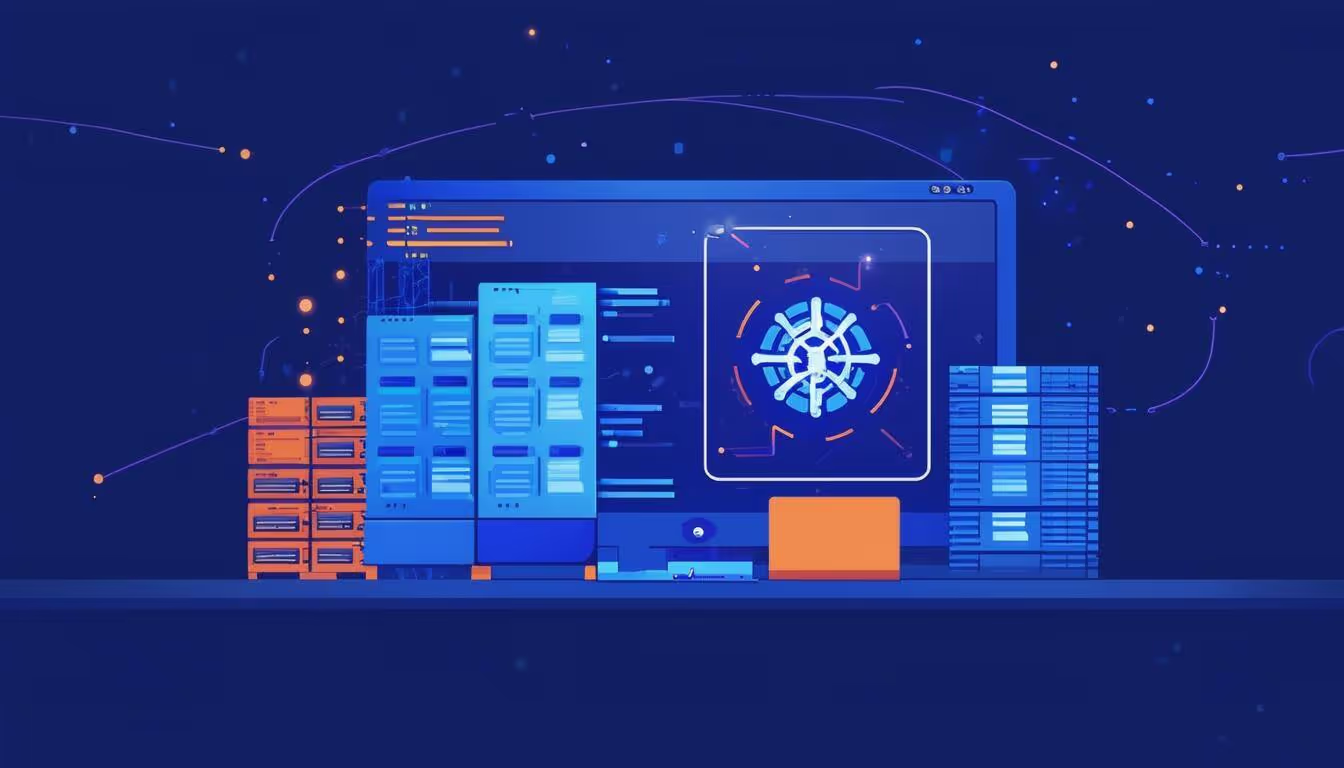For those new to platform engineering and just getting into Kubernetes, managing clusters, keeping everything secure, and maintaining operational efficiency can feel like a lot to handle. But combining Portainer, Omni, and Talos Kubernetes (both from Sidero Labs) can make your life a lot easier by simplifying cluster management, automating tasks, and boosting security. Here’s how:
Cluster Management, Made Simple
Kubernetes is powerful, but setting it up and managing it across environments (cloud, edge, or bare metal) can be a pain. Talos Linux for Kubernetes includes only the most essential Linux system components, making it much simpler to deploy and manage clusters without worrying about OS updates, SSH access, or other distractions. Omni extends the simplicity of Talos Linux even further, making cluster creation as simple as booting a machine off the appropriate image.
When you add Portainer, it provides an easy-to-use UI to handle things like deploying apps and managing workloads. Instead of diving into the command line for everything, you can control multiple clusters from one dashboard. This is great when you’re still learning the ropes of Kubernetes but need to manage it like a pro.
Security That Doesn’t Require a Security Expert
Kubernetes security is tough to get right, especially when you’re new to it. Talos helps by minimizing the attack surface—there’s no SSH and only essential services running, so there are fewer ways for someone to compromise your cluster. Omni ensures your Kubernetes API is protected and integrated into your enterprise IDP, provides an encrypted management channel to all nodes, and prevents Kubernetes secrets from leaking.
Portainer helps on the application side by giving you role-based access control (RBAC), so you can control who has access to different parts of the cluster. It’s simple to set up, even if you don’t have a deep security background yet.
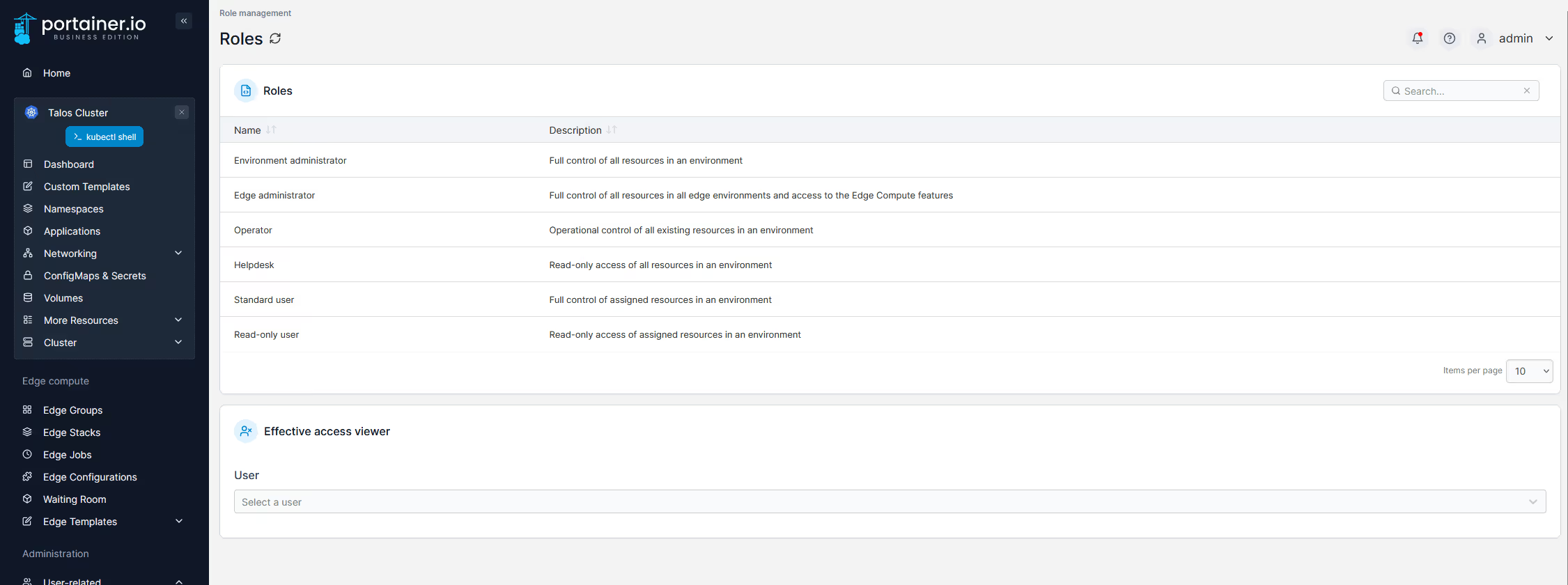
Designed for Bare Metal, Cloud, or Edge
One of the cool things about Talos Kubernetes is that it works well in different environments. Whether you’re managing a bare-metal setup, Virtual Machines, cloud IaaS VMs, or edge devices, it’s consistent. Portainer lets you manage all of these environments in one place, so you don’t have to switch between tools as you scale out. This is especially useful if you’re running different types of infrastructure as you learn Kubernetes.
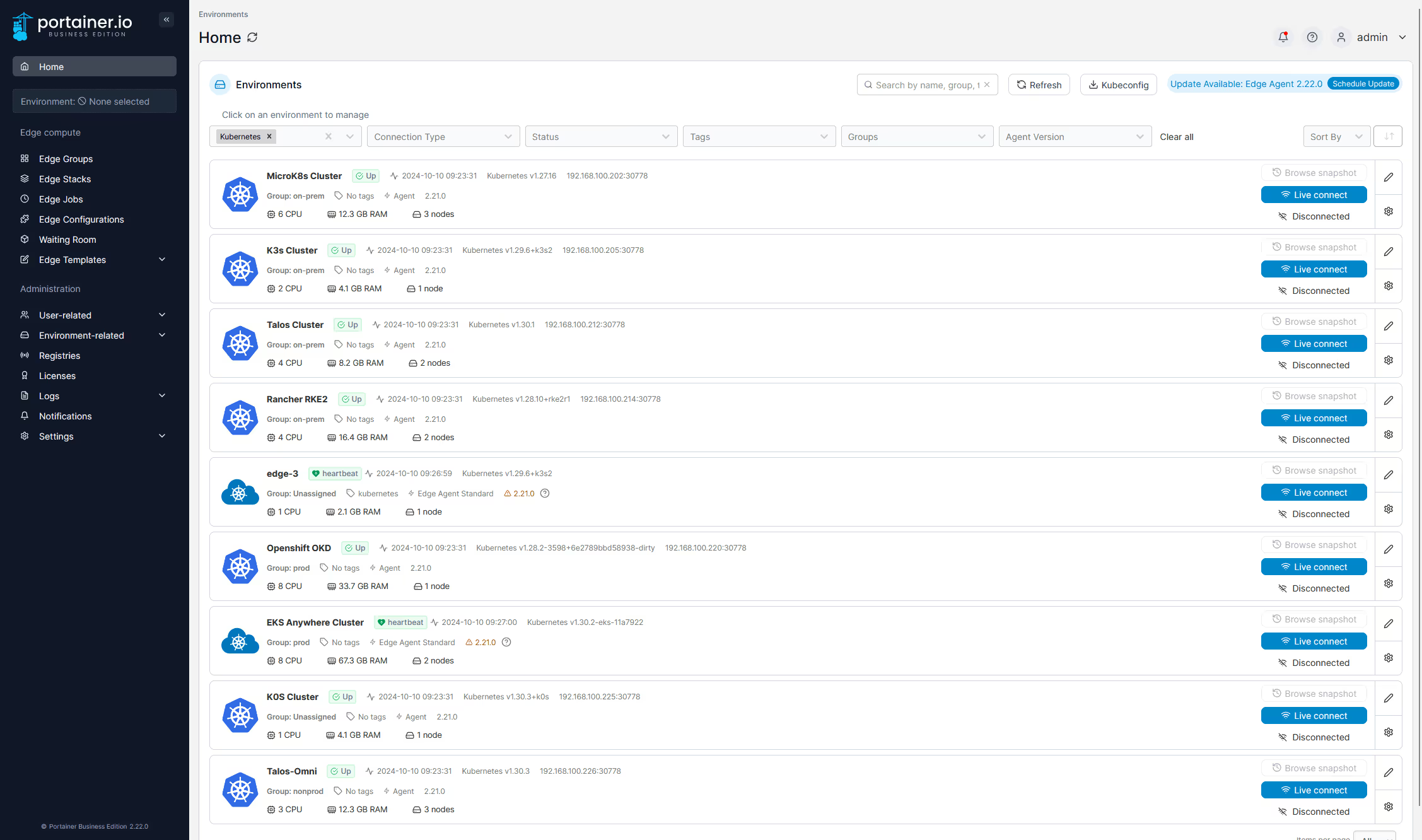
Automation Handles the Hard Stuff
Managing Kubernetes clusters means you’re constantly updating, scaling, and deploying new services. Talos and Omni automate the heavy lifting involved in cluster updates, and Portainer lets you deploy applications quickly with templates that are ready to go. You can focus more on learning and less on routine management tasks.
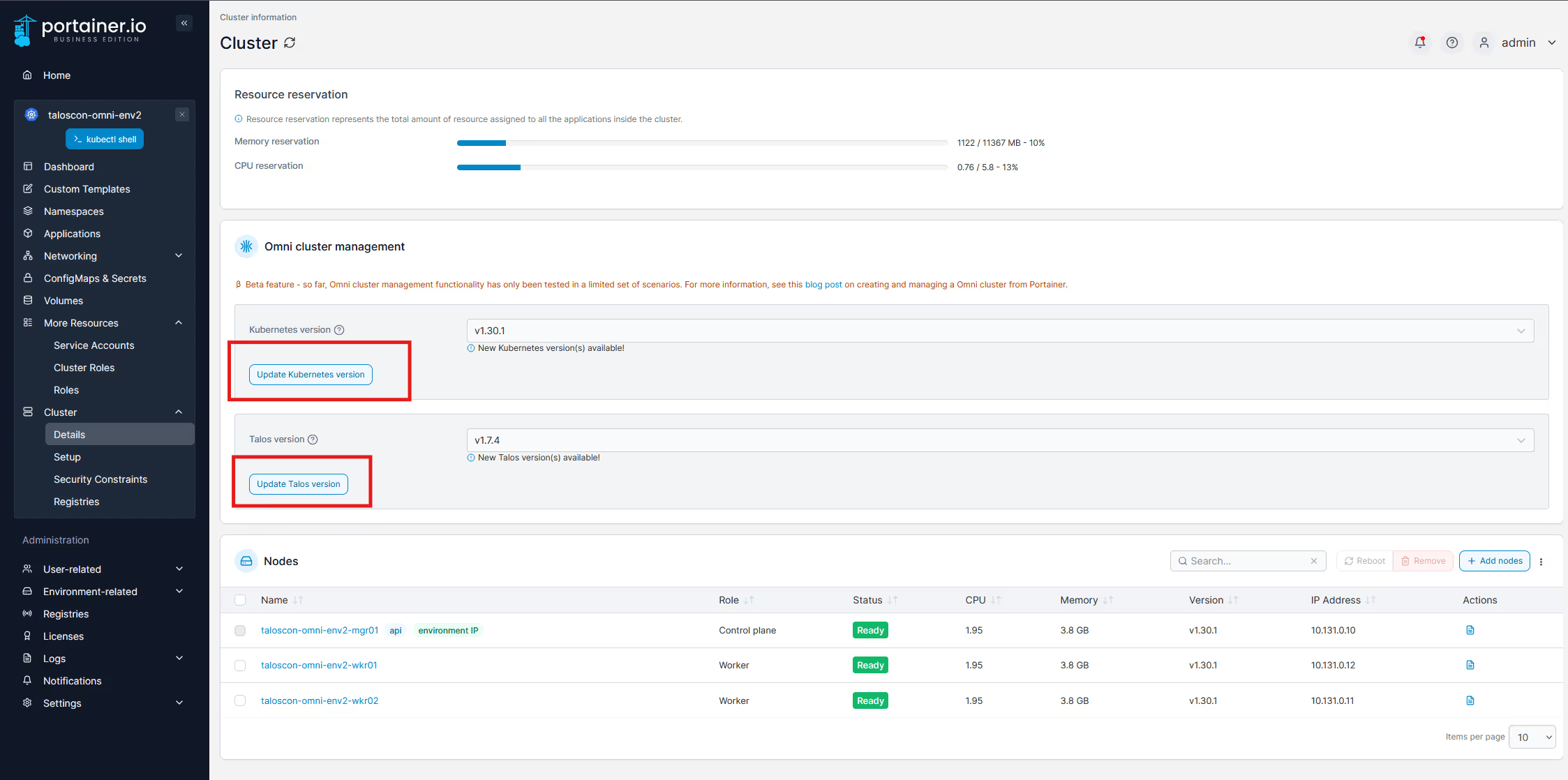
Visibility and Troubleshooting Without the Headache
Knowing what’s going on in your clusters is key, especially when things go wrong. Portainer gives you an easy way to view logs, monitor performance, and track what’s happening in real-time. Instead of digging through a pile of terminal commands, you get everything in one clean UI. This makes troubleshooting a lot less painful, especially as you’re still building your expertise.
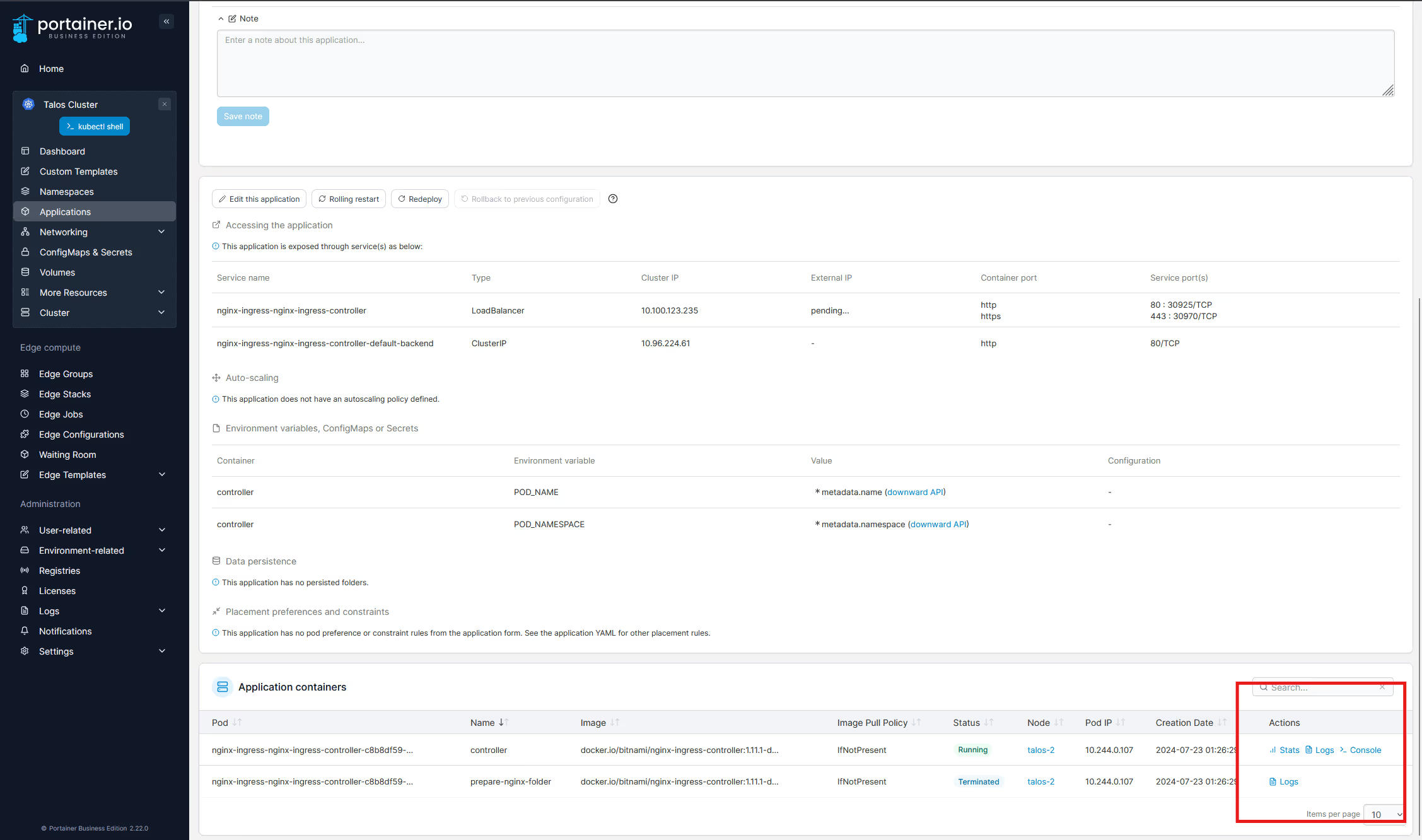
Cutting to the chase: combining Portainer, Omni, and Talos Kubernetes takes a lot of the hassle out of Kubernetes. They automate the hard stuff, give you an intuitive UI, and offer a secure foundation—all of which is perfect for someone starting out in platform engineering.
This way, you can spend more time learning and experimenting, and less time firefighting Kubernetes.
